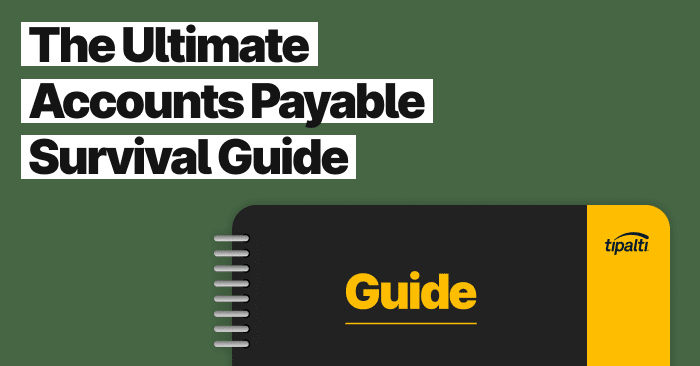
See how forward-thinking finance teams are future-proofing their organizations through AP automation.
Fill out the form to get your free eBook.

Today, the finance function has more responsibilities than ever. In high-growth businesses, every operation—both front and back-office—is inexplicably tied to investment versus reward. To survive the uncharted road ahead, the modern, forward-thinking finance team has to future-proof their organization for success. Download the guide to discover: – The untamed wilderness of finance – How to forge an accounts payable path – How to strategize your next move – The ultimate accounts payable survival tool – How real-life survivalists scaled their businesses
What are Per Diem Rates in the UK?
Per diem rates, or better known as subsistence in the UK, refer to fixed daily travel allowances provided by employers to cover expenses for employees on work-related trips. These standardised rates help simplify business travel management and reimbursement.
In the UK, per diem policies must align with guidelines from HM Revenue & Customs (HMRC) to qualify as tax-free reimbursements. Understanding HMRC rules and best practices for per diems enables organisations to create programs that are compliant, fair, and efficient.
What is Per Diem (Subsistence)?
Per diem translates from Latin to mean “per day” or “for each day.” In a business travel context, per diem, or subsistence, refers to the daily allowance an employer provides to employees to cover costs incurred while travelling for work. These expenses typically include:
- Meals
- Accommodation
- Incidental costs like transportation between appointments, tips, parking fees, and internet usage
Per diem rates represent the maximum reimbursable amounts for these necessary trip-related costs on a daily basis without receipts. Having a fixed per diem allowance thus eliminates the need for employees to collect and submit receipts for every minor expense while travelling.
Instead, employees receive a lump sum based on the number of travel days.
The use of per diems for work trips has become a common practice among UK companies. Their popularity stems from the ability to streamline processes, control costs, and simplify tax treatment.
How Per Diem (Subsistence) Works
To deliver an efficient and fair system of travel expense management, per diem in the UK operates through fixed standard rates and allowances.
Overview of HMRC Benchmark Scale Rates
Unlike some countries, the UK does not have statutory per diem (subsistence) rates. However, HMRC provides advisory benchmark scale rates to guide companies:
Domestic UK Rates (HMRC Advisory Benchmark Scale)
| Duration | Rate |
| One meal (5 hours) | £5 |
| Two meals (10 hours) | £10 |
| Three meals (12 hours) | £15 |
| 24-hour rate | £25 |
Incidental Overnight Expenses (HMRC Guidance – Appendix 8)
| Location | Rate per Night |
| Within the UK | £5 |
| Outside of the UK | £10 |
International Rates (HMRC Guidance – Chapter 9)
For overseas trips, HMRC publishes country and city-specific benchmark rates covering accommodation, meals, and incidentals. These vary significantly by destination.
Example International Rates
| Country | City | 24-hr Rate | Room Rate |
| USA | New York | $102.50 | $216.00 |
| France | Paris | €117.00 | €199.50 |
| Germany | Berlin | €72.00 | €167.50 |
| Japan | Tokyo | ¥11,290.50 | ¥18,381.50 |
| Australia | Sydney | AU$195.00 | AU$227.00 |
Source: HRMC guidance, (EIM30240), (Chapter 9), and (Appendix 8)
Note: These rates are tax-exempt when used within HMRC guidelines. Any payments exceeding these benchmark rates may be subject to tax and National Insurance contributions.
Key Features of Per Diem (Subsistence) Delivery
- Fixed daily amounts: Employees receive standardised per diem based on duration and destination.
- No receipts required: Submission process is simplified without need for detailed documentation.
- Separate from regular pay: Per diems are typically paid separately outside normal payroll cycles.
- Tax-free if within HMRC limits: Payments under HMRC thresholds are not considered taxable income.
- Payments linked to travel: Per diem eligibility is based on established business travel policies.
By providing fixed daily rates tailored to different types of business trips, the per diem system aims to create standardised, fair, and efficient reimbursement of employee travel expenses.
Setting and Using Per Diem Rates
When implementing per diem policies, UK companies should consider key factors including HMRC guidance, business needs, and geographic variations in rates.
Influencing Factors
Several elements influence appropriate per diem rates and allowances:
- HMRC guidelines: Standard UK rates provide a baseline guidance for domestic trips.
- Business requirements: Some companies may require higher rates based on policies.
- Trip purpose: Conferences, site visits, and client meetings may require different per diem amounts.
- Destination: Rates will vary significantly between London, other large cities, and rural areas.
- International travel: Each overseas country has specific benchmark rates.
Benefits of Using Per Diem
Implementing standardised per diem allowances offers numerous advantages for both UK employers and employees when managed properly.
Benefits for Employees
For employees who regularly travel for business using their own or corporate cards, per diem systems provide several benefits:
- Simplify expense reporting: Eliminates the need to collect and submit receipts to claim reasonable expenses.
- Provide clarity: Per diem policies offer clear expectations about reimbursement amounts.
- Increase flexibility: Employees can determine how to allocate per diem within prescribed limits.
- Enhance tax efficiency: Amounts within HMRC thresholds are not taxed as income.
- Improve cash flow: Per diems are paid separately from salary for quick reimbursements.
By simplifying reporting and providing set reimbursement amounts, per diem can enhance the business travel experience for employees.
Benefits for Employers
For companies that manage frequent business travel, implementing per diem allowances offers advantages including:
- Reduce administrative costs: Less time spent processing detailed expense reports and receipts.
- Control expenses: Per diem provides fixed, predictable travel costs.
- Promote compliance: HMRC-aligned rates help avoid tax issues.
- Standardise processes: Consistent rules and amounts across all employees.
- Improve budgeting: Easier financial forecasting with fixed per diem amounts.
- Encourage accountability: Employees are incentivised to limit expenses within daily rates.
Overall, per diem systems allow employers to manage travel reimbursements with greater efficiency, consistency, and cost control.
Key Considerations for Employers
While per diem policies offer important benefits, UK employers must carefully consider critical factors for implementation including:
Setting Fair and Compliant Policies
When setting fair and compliant policies, employers should begin by using HMRC domestic rates as minimums while researching local costs for international per diem allowances.
It’s good to evaluate needs across different employee levels and trip types, while ensuring consistency across departments and locations. Also, clear rules and processes should be communicated to all employees.
Tracking and Documenting Payments
For effective tracking and documentation of payments, employers should implement a system requiring standardised report submissions and collection of accommodation receipts for verification. This process can be aided by utilising expense management software while maintaining detailed records of all per diem payments. Regular periodic audits should be conducted to ensure ongoing compliance.
Understanding Tax Implications
Payments within HMRC benchmark subsistence rate guidelines are generally considered non-taxable, while any excess amounts may be considered taxable income and National Insurance Contributions, unless agreed with HMRC as a bespoke rate.To comply with HMRC rules, businesses should have a system in place that ensures the payments relate to genuine business travel and that they reflect a reasonable estimate of costs incurred by employees on those trips. Failure to follow HMRC guidelines could lead to additional tax liabilities and penalties.
Best Practices for Employees Using Per Diem
To make the most of per diem allowances, employees who regularly travel for business should follow these best practices:
Staying Within Per Diem Limits
Employees should begin by researching costs at their travel destination in advance and prioritising spending on essential expenses to stay within limits. It’s important to choose budget-friendly accommodation and dining options while using apps to track spending against daily allowances. Additionally, employees should ensure they understand the rules for partial days.
Maintaining Proper Documentation
Saving detailed records of all expenses and retaining receipts, even when submission is not required helps to ensure adequate documentation. Employees should make use of company-provided apps and tools while clearly categorising per diem versus other expenses.
Communicating About Discrepancies
What if issues arise? Staff should thoroughly understand company per diem policies and promptly notify their employer of any unusual costs. If expenses exceed the per diem allowance, proper context would need to be provided. Employees are encouraged to offer feedback to improve policies while maintaining transparency and honesty throughout the process.
Per Diem Management Tools and Resources
Using state-of-the-art expense management solutions and resources can simplify per diem tracking and reporting for UK organisations.
Digital Tools
Tools like Tipalt offer robust expense management capabilities through several key features. These include a mobile app for easy expense capture and submission, along with automated policy compliance functionality. The system provides global payment visibility and reconciliation, while offering detailed analytics on spend patterns. Additionally, the solution integrates seamlessly with ERP systems for comprehensive management.
Benefits of Automation
Automating per diem processes offers numerous advantages to organisations. Software automates processes significantly, reducing manual administrative tasks while improving accuracy compared to traditional manual methods. Organisations benefit from real-time visibility into expense patterns and enhanced compliance and auditability features. Furthermore, employees enjoy faster reimbursements through the automated system.
Helpful Resources
Several valuable resources are available to support per diem management. HMRC guidelines provide essential information on tax rules and acceptable amounts, while industry guides offer best practice recommendations from professional organisations.
Comprehensive software documentation includes user tutorials and support from solutions like Tipalt, and built-in calculators help determine appropriate per diem amounts.
Conclusion: Key Takeaways
Per diem transforms business travel expense management through simplified reporting and built-in oversight. Employees win flexibility within clear boundaries. Companies gain cost control, tax compliance, and administrative efficiency.
Yet realising per diem’s full potential requires diligence:
- Align with HMRC rules for tax-free allowances
- Consider geographic differences in rates
- Communicate policies clearly to staff
- Leverage modern software to optimise administration
By implementing well-structured policies and procedures, UK companies can use subsistence to control travel costs, ensure fairness, and increase productivity.
Executives and managers should consider it as a strategic option that is supported by HMRC guidance. For streamlined management of subsistence payments, Tipalti can offer automated solutions for mass payments and compliance. Sounds exactly what you need? Then read our AP survival guide to find out more.
Note: This text is based on information as of January, 2025. Regulations and allowances are subject to change. Always consult the latest HMRC guidance and seek professional tax advice for your specific circumstances before implementing any arrangements. The information provided here is for general guidance only and does not constitute professional tax or legal advice.
